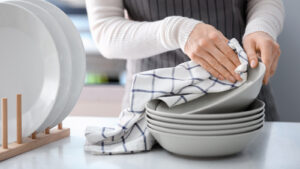Red wine has been celebrated for centuries, and its allure goes far beyond just its taste. It’s a symbol of culture, sophistication, and conviviality. Whether you’re a wine connoisseur or a novice, understanding how to drink red wine can elevate your enjoyment and appreciation of this timeless beverage. In this comprehensive guide, we will explore the world of red wine, from selecting the right bottle to mastering the art of tasting and pairing it with food. By the end of this article, you’ll have the knowledge and confidence to drink red wine like a true aficionado.
Choosing the Right Red Wine
Before you can enjoy red wine to its fullest, it’s essential to choose the right bottle. The options can be overwhelming, with countless grape varieties, regions, and styles to consider. Here are some key factors to help you make an informed choice:
Grape Variety: Red wines are primarily made from several grape varieties, each with its unique flavor profile. Popular choices include Cabernet Sauvignon, Merlot, Pinot Noir, and Shiraz. Research the characteristics of each grape to find your preference.
Wine Regions: Different wine regions around the world produce red wines with distinct characteristics. For example, Bordeaux in France, Napa Valley in California, and Tuscany in Italy are renowned for their red wines. Explore wines from various regions to discover your favorites.
Wine Styles: Red wines come in various styles, from light and fruity to bold and full-bodied. Consider the occasion and your personal taste when selecting a wine style.
Proper Wine Storage
Once you’ve chosen the perfect bottle of red wine, it’s crucial to store it correctly to preserve its quality and flavor. Proper storage conditions include:
Temperature: Red wine should be stored at a consistent temperature, ideally between 55-65°F (13-18°C). Avoid extreme temperature fluctuations, as they can harm the wine.
Humidity: Maintain a humidity level of around 70% to prevent corks from drying out and allowing air to enter the bottle.
Darkness: Store wine in a dark place or use UV-filtered lighting to protect it from light exposure, which can cause wine to deteriorate.
Horizontal Storage: Lay wine bottles horizontally to keep the cork in contact with the liquid, preventing it from drying out and letting air in.
Opening and Decanting Red Wine
Opening a bottle of red wine is a ritual in itself, and it’s important to do it properly to avoid damaging the wine. Follow these steps:
Choose the Right Tools: Use a quality corkscrew to open the bottle. Ensure the corkscrew is clean and in good condition.
Cutting the Foil: Remove the foil covering the cork by making a clean cut just below the lip of the bottle neck.
Cork Extraction: Insert the corkscrew into the center of the cork and twist it gently, keeping it as straight as possible. Slowly pull the cork out without rushing or applying excessive force.
Decanting: Some red wines benefit from decanting, which involves transferring the wine from the bottle to a decanter. This allows the wine to aerate and release its aromas. Generally, younger, tannic wines benefit more from decanting than older ones.
The Art of Tasting Red Wine
Tasting red wine is a sensory experience that engages your sight, smell, and taste. To fully appreciate the wine, follow these steps:
Pouring: Pour a small amount of wine into a clean wine glass, filling it no more than one-third full. This allows room for swirling and aerating.
Observe the Color: Hold the glass against a white background and observe the wine’s color. Tilt the glass slightly and note the hue at the rim and the core. Red wines vary from pale ruby to deep garnet and even purple.
Swirl and Smell: Gently swirl the wine in the glass to release its aromas. Put your nose into the glass and take a moment to inhale the bouquet. Identify the various scents, such as fruits, flowers, spices, or earthy notes.
Sip and Savor: Take a small sip and let the wine coat your palate. Pay attention to the initial flavors, the wine’s body, acidity, tannins, and finish. Consider the balance and complexity of the wine.
Note Your Impressions: Keep a wine journal or mental notes of your impressions. This will help you remember wines you enjoy and develop your palate over time.
Pairing Red Wine with Food
Pairing red wine with the right food can enhance both the wine and the meal. Here are some general guidelines:
Red Meat: Red wines, particularly those with robust tannins like Cabernet Sauvignon, pair excellently with red meat dishes such as steak, lamb, and venison.
Poultry: Lighter reds like Pinot Noir or Merlot can complement chicken or turkey dishes, especially when prepared with earthy or mushroom-based sauces.
Pasta and Tomato-Based Dishes: Italian red wines like Chianti pair beautifully with pasta dishes featuring tomato-based sauces.
Cheese: A variety of red wines can complement cheese, depending on the type. For example, try a Bordeaux with a rich cheese like Brie or a Zinfandel with aged cheddar.
Desserts: Pair sweet red wines like Port or Late Harvest Zinfandel with chocolate or berry-based desserts.
Drinking red wine is more than just consuming a beverage; it’s about savoring the rich history, culture, and craftsmanship behind each bottle. By selecting the right wine, storing it correctly, opening and decanting with care, tasting mindfully, and pairing it thoughtfully with food, you can unlock a world of flavors and aromas. Whether you’re sharing a bottle with friends, enjoying a romantic dinner, or simply indulging in a glass on your own, the art of drinking red wine adds depth and pleasure to the experience. Remember that wine appreciation is a journey, so keep exploring, learning, and, most importantly, savoring every sip. Cheers!
Serving Red Wine with Style
Serving red wine with style not only enhances the overall experience but also shows your appreciation for the drink. Here are some tips on serving red wine:
Wine Glasses: Use proper wine glasses designed for red wine. These glasses have a wider bowl and a larger surface area, allowing the wine to breathe and releasing its aromas more effectively. Holding the glass by the stem prevents your body heat from affecting the wine’s temperature.
Serving Temperature: Red wine is best enjoyed at slightly below room temperature. You can chill it in the refrigerator for about 30 minutes before serving if it’s too warm, especially during the hot summer months.
Quantity: Pour a standard serving of red wine, which is about 5 to 6 ounces (150-180 ml). This amount allows you to fully appreciate the wine without overwhelming your palate.
Presentation: When serving red wine to guests, present the bottle, and open it at the table. Pour a small taste for the person who ordered it to ensure it’s not corked or spoiled. After approval, pour for the rest of the table.
Wine Etiquette and Social Aspects
Drinking red wine often involves social gatherings, whether it’s a wine tasting event, dinner party, or casual get-together. Observing proper wine etiquette adds to the enjoyment of the occasion:
Wine Tasting Notes: When attending a wine tasting or sharing a bottle with friends, feel free to discuss your impressions of the wine. Use descriptive terms to articulate its flavors and aromas, but remember that taste is subjective, and everyone’s palate is different.
Wine Pairing Discussions: Engaging in conversations about wine and food pairings can be a delightful way to explore new combinations and learn from others.
Respect the Host’s Choice: If someone else has chosen the wine for an event, show appreciation for their selection, even if it’s not your personal favorite.
Responsible Drinking: Red wine, like all alcoholic beverages, should be consumed responsibly. Be mindful of your alcohol intake and arrange for a designated driver or alternative transportation if needed.
Continuing Your Wine Journey
The world of red wine is vast and ever-evolving. As you continue your journey, consider the following:
Wine Education: Attend wine tastings, seminars, and courses to deepen your knowledge and refine your palate. Many regions have wine events where you can taste a variety of wines.
Wine Travel: If possible, visit wine-producing regions to experience the culture, vineyards, and winemaking process firsthand. It’s an excellent way to gain a deeper understanding of the wines you enjoy.
Experimentation: Don’t be afraid to try new wines and expand your horizons. You might discover hidden gems in unexpected places.
Share the Experience: Sharing your passion for red wine with others can be a rewarding experience. Host wine tastings, share recommendations, and enjoy the journey with friends and loved ones.
Drinking red wine is an art that combines tradition, science, and personal pleasure. By understanding the nuances of selecting, storing, opening, tasting, and pairing red wine, you can unlock a world of flavors and aromas that enrich your life. Whether you’re a novice or a seasoned enthusiast, the journey of appreciating red wine is a lifelong adventure filled with discovery, delight, and the opportunity to connect with others who share your passion. So, raise your glass to the timeless joy of red wine and the camaraderie it brings to those who appreciate its charm. Cheers to your continued exploration of the world of red wine!




